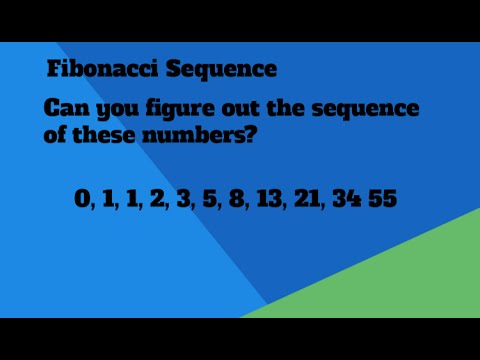Fibonacci Series – Definition & Examples

The sequence is described in mathematics as an ordered set of integers that follow a specified pattern. The words are the numbers that appear in the sequence. Arithmetic sequences, geometric sequences, harmonic sequences, and Fibonacci sequences are the various forms of sequences. In this post, we will go through the concept, formula, list, and examples of the Fibonacci sequence in depth.
If you want to know more about Fibonacci numbers as well as the Fibonacci series, you can visit the Cuemath website.
What are Fibonacci Numbers?
A Fibonacci number is defined as a series of numbers that may be obtained by adding the 2 previous numbers. It signifies that the next number in the series is the sum of the preceding two. Assume that the first two numbers in the series are 0 and 1. We get the 3rd number as 1 by adding 0 and 1. Then, by adding the second and third numbers (i.e., 1 and 1), we obtain the 4th number as 2, and so on. As a result, the Fibonacci series is as follows: 0, 1, 1, 2, 3, 5, 8,… As a result, the resulting series is known as the Fibonacci number series.
Properties of the Fibonacci Numbers
The Fibonacci numbers have the following qualities.
- Take any 3 consecutive numbers in the Fibonacci series and add them together. The three numbers are obtained by dividing the result by two. For example, three consecutive numbers: 1, 2, 3. When you put these numbers together, you get 6, i.e. 1+2+3 = 6. When you divide 6 by 2, you get 3, which is 3.
- Take four consecutive Fibonacci numbers that are not 0. Multiply the outer number as well as the inner number. When these numerals are subtracted, the difference is “1.” Take, for example, four consecutive integers like 2, 3, 5, and 8. Multiply the outside numbers, 2(8), and the inside number, 3 (5). Subtract these two integers, 16-15 = 1. As a result, the difference is 1.
What is the Fibonacci Sequence?
The Fibonacci sequence, often called Fibonacci numbers, is a number series in which each number is equivalent to the total of the two numbers preceding it. The Fibonacci Sequence is denoted as follows:
Fibonacci Number Sequence = 0, 1, 1, 2, 3, 5, 8, 13, 21,….
The third term “1” is generated by combining the first and second terms. (For example, 0+1 Equals 1)
Similarly,
By combining the 2nd and 3rd terms (1+1 = 2), we get “2.”
“3” is obtained by multiplying the 3rd and 4th terms (1+2) together, and so on.
For example, combining 13 and 21 yields the following word after 21. As a result, the following word in the series is 34.
Are you Confused Between the Terms Series & Sequence? Let’s know the Difference.
A sequence is defined as a list of integers in a certain order. The terms of the series are represented by the numbers in the list. A series is formed by adding all of the terms of a sequence. Sequence and series are the same as sets, but the difference is that single words in a sequence can show continuously in different locations. A sequence’s length is equal to the number of terms, which might be limited or infinite.
Significance of Fibonacci Series
Because of the so-called golden ratio of 1.618, or its inverse 0.618, the Fibonacci sequence is noteworthy. Any given number in the Fibonacci sequence is about 1.618 times the preceding number, omitting the first few numbers.
The golden ratio indicates observable patterns in everything from atoms to massive stars in the sky. The ratio is obtained from the Fibonacci sequence, which was named after its Italian creator, Leonardo Fibonacci. Nature uses this ratio to preserve equilibrium, and it appears that the financial markets do as well.




